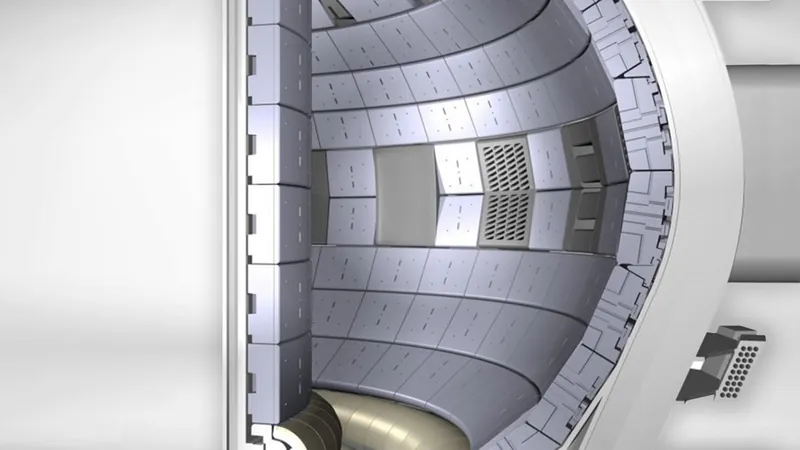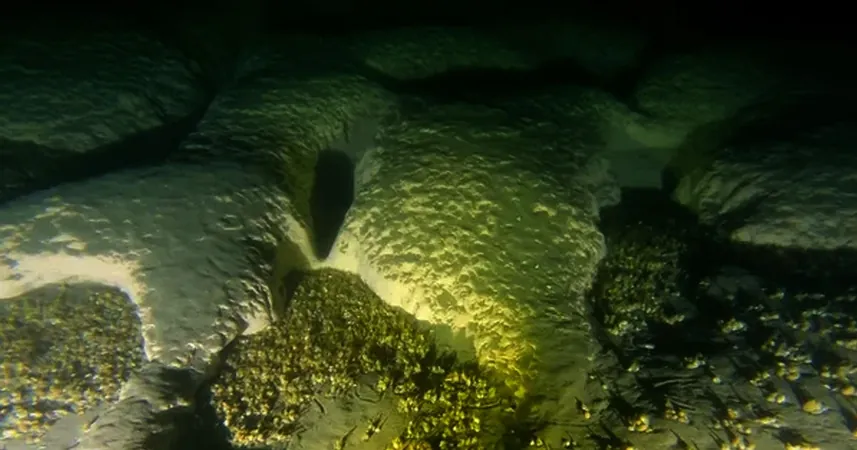
Groundbreaking Discovery: Could Boron Be the Key to Stabilizing Fusion Energy?
2024-10-07
Author: Rajesh
Introduction
In a thrilling turn of events for fusion research, scientists are honing in on tungsten as a primary material for components directly interacting with the plasma in fusion reactors, specifically tokamaks and stellarators. However, the intense heat generated by fusion plasma presents a significant challenge: tungsten atoms can sputter off the reactor wall and contaminate the plasma. An influx of tungsten can cool the plasma, making it exceedingly difficult to sustain the crucial fusion reactions.
Potential Solution with Boron Powder
A team of innovative researchers at the U.S. Department of Energy's Princeton Plasma Physics Laboratory (PPPL) may have stumbled upon an elegant solution: introducing boron powder into the tokamak environment. This clever strategy could help shield the reactor wall from the plasma, drastically reducing the amount of tungsten that escapes into it.
Experimental Evidence and Presentation
Their findings are backed by both experimental evidence and a newly developed computer modeling framework. The promising results are set to be unveiled at the 66th Annual Meeting of the American Physical Society Division of Plasma Physics in Atlanta. This could be a game changer for the realm of fusion energy.
Expert Insights
Joseph Snipes, deputy head for Tokamak Experimental Science at PPPL, expressed optimism about the potential of this solid boron injection system, especially after experiments conducted across three tungsten-walled tokamaks—in Germany, China, and the U.S.—showed significant reductions in tungsten sputtering. 'Imagine a saltshaker filling the tokamak plasma with boron powder,' he explained. 'This boron is ionized at the plasma's edge, forming a protective layer on the tokamak’s inner walls and the exhaust region. This layer can effectively keep tungsten out of the plasma, preserving its energy.'
Integration with ITER Project
The ultimate vision is to utilize this boron injection system within the ITER reactor-scale tokamak project. A standout feature of this system is its ability to introduce boron during the reactor's operation while precisely controlling the quantity injected. Such a system is vital, especially given that the boron layers can capture the radioactive tritium, which must be limited for nuclear safety compliance.
Modeling Framework Development
Florian Effenberg, a research physicist at PPPL, has been instrumental in crafting a sophisticated computer modeling framework for the boron injection system in the DIII-D tokamak. His findings suggest that distributing boron from a single injection point could effectively uniform its distribution across the reactor’s components.
Understanding Boron’s Behavior
'This new approach allows us to examine how injected boron behaves within the fusion plasma and how it interacts with the reactor walls,' Effenberg stated. 'It's vital for maintaining the structural integrity of the walls during operation.'
Combining Computer Models
The researchers have ingeniously combined three distinct computer models—one simulating plasma behavior, another tracking the movement and evaporation of the boron particles, and a final model exploring how these particles mingle with the reactor walls. These insights are pivotal for refining boron injection strategies, guaranteeing effective wall conditioning in both ITER and other fusion reactors.
Future Directions
As the research progresses, the following phase will focus on adapting the modeling framework for ITER, which plans to implement tungsten walls rather than the carbon walls used in DIII-D. Understanding how boron interacts differently with these materials will be crucial to the success and safety of future fusion endeavors.
Conclusion
Excitingly, this breakthrough not only promises improvements in plasma stability but also sparks hope for the broader quest to make fusion a viable and sustainable energy source for the future. Could this be the key that unlocks the door to limitless clean energy? Only time will tell, but the journey is certainly electrifying!




 Brasil (PT)
Brasil (PT)
 Canada (EN)
Canada (EN)
 Chile (ES)
Chile (ES)
 España (ES)
España (ES)
 France (FR)
France (FR)
 Hong Kong (EN)
Hong Kong (EN)
 Italia (IT)
Italia (IT)
 日本 (JA)
日本 (JA)
 Magyarország (HU)
Magyarország (HU)
 Norge (NO)
Norge (NO)
 Polska (PL)
Polska (PL)
 Schweiz (DE)
Schweiz (DE)
 Singapore (EN)
Singapore (EN)
 Sverige (SV)
Sverige (SV)
 Suomi (FI)
Suomi (FI)
 Türkiye (TR)
Türkiye (TR)